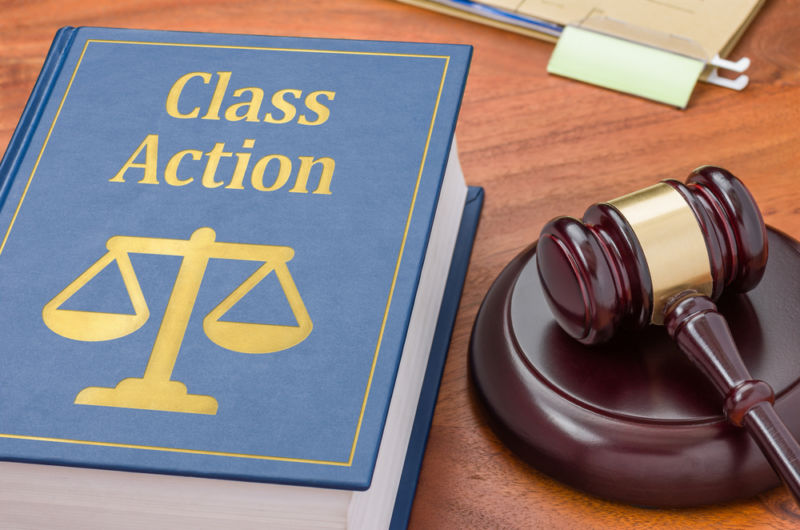Your Legal rights, Your Voice: The Fundamentals of Going After a Class Action Lawsuit
Wiki Article
Recognizing Course Action Legal Action: An Overview for Lawyers
Class activity claims have come to be an indispensable component of the legal landscape, enabling for the consolidation of numerous insurance claims right into a single activity. For attorneys, comprehending the intricacies of course activity litigation is crucial in efficiently representing their customers. This detailed overview discovers the basics of course activity lawsuits, from identifying possible class participants to navigating the qualification procedure. In addition, it explores crucial techniques for handling class action lawsuits and supplies understandings into bargaining and obtaining approval for settlements. By diving right into the complexities of class activity claims, this guide furnishes attorneys with the knowledge and devices needed to effectively navigate this intricate area of regulation.The Essentials of Class Activity Suits
Class activity suits are a legal device utilized to combine similar cases from a team of people into a single lawsuit, giving a efficient and cost-efficient technique to seeking justice and resolution. This sort of claim allows a depictive complainant, acting upon part of the entire class, to bring a claim versus a defendant that has presumably created injury or broke the civil liberties of numerous individuals.The standard needs for bringing a course action legal action include numerosity, commonality, typicality, and competence of depiction. Numerosity refers to the fact that the course need to be so big that joinder of all participants would certainly be unwise.
Course action claims can be useful for both defendants and plaintiffs. For offenders, it offers the opportunity to efficiently solve several claims in a solitary legal action, staying clear of the demand to protect versus various specific suits.
Identifying and Assessing Potential Class Participants
After developing the basic demands for a class action claim, the next step is to identify and assess possible course members. This process entails determining who may be part of the course and examining their claims to establish if they meet the necessary standards.To identify possible class participants, lawyers typically carry out comprehensive study and collect pertinent info. This might include evaluating records, performing meetings, and analyzing records to recognize people or entities that may have been affected by the alleged misdeed. It is important to establish a extensive and clear listing of potential class members to make sure that all influenced celebrations are consisted of in the claim.
When possible class members have actually been identified, the following action is to assess their claims. This involves evaluating the advantages of each private insurance claim to determine if they fulfill the lawful requirements for course certification. Legal representatives need to very carefully evaluate the facts, evidence, and lawful theories of each prospective class participant's case to guarantee that they have a sensible situation.
Analyzing possible class members also involves establishing whether they meet the class interpretation and have suffered similar damage as a result of the defendant's actions. This needs contrasting the realities and conditions of each prospective class participant's circumstance to the allegations and legal theories put forth in the lawsuit.
Browsing the Course Accreditation Process
To effectively browse the class certification procedure, legal representatives must carefully stick to the procedural requirements stated by the court. Class accreditation is a crucial action in a course action suit, as it establishes whether a situation can proceed as a course action, standing for a group of people that have similar claims versus an accused. The process entails satisfying particular standards, such as numerosity, commonness, typicality, and competence of depiction.First of all, legal representatives have to establish numerosity by demonstrating that the course is so large that private joinder is not practical. This can be achieved with proof or specialist testimony. Secondly, they must establish commonness by showing that there prevail inquiries of legislation or reality that predominate over specific issues. This calls for a thorough evaluation of the defenses and claims entailed.
Following, lawyers have to reveal typicality, which means that the depictive plaintiff's cases are common of the cases of the class participants. This makes sure that the passions of the representative plaintiff straighten with the rate of interests of the course. Finally, legal representatives need to demonstrate competence of depiction, indicating that the depictive plaintiff and their advise will fairly this page and properly stand for the passions of the class.
To navigate this procedure successfully, lawyers need to extensively prepare by conducting considerable research, gathering proof, and creating an engaging debate that pleases each of these requirements. They need to additionally be prepared to reply to any type of objections or challenges raised by the defendant. By diligently adhering to the procedural demands set forth by the court, legal representatives can boost their possibilities of obtaining class accreditation and progressing the rate of interests of the course participants.

Secret Approaches for Handling Course Action Litigation
Upon efficiently navigating the class qualification procedure, attorneys need to after that execute crucial strategies for efficiently taking care of course action litigation. These methods are critical to guarantee that the situation continues efficiently and efficiently, eventually making best use of the chances of a positive end result for the class participants.
One secret method is to establish a solid and natural legal team (Class action lawsuit). This involves putting together a group of attorneys with expertise in class action litigation, in addition to various other appropriate areas such as the particular industry or subject issue associated with the case. A well-rounded team can bring various perspectives and skills to the table, enhancing the overall effectiveness of the lawsuits
An additional vital approach is to create a well-balanced and detailed litigation plan. This plan should outline the total purposes of the situation, in addition to the particular legal concepts and disagreements that will be pursued. It needs to additionally consist of a timeline and budget plan to guarantee that the case remains on track and within the allocated resources.
Additionally, lawyers need to proactively engage with the course members throughout the litigation process (Class action lawsuit). This consists of providing routine updates on the progress of the instance, looking for input and feedback from the course members, and addressing any kind of questions or worries they may have. By cultivating open communication and collaboration, legal representatives can develop trust fund and support amongst the class participants, which can be important in achieving a successful resolution
Settling Course Activity Lawsuits: Negotiation and Approval
When it pertains to clearing up course action lawsuits, effective negotiation and getting approval are essential steps in accomplishing a resolution. Course action claims are complex and include a lot of plaintiffs, making it vital to reach a settlement that is sufficient and fair to all celebrations entailed.
When a negotiation arrangement is gotten to, it has to be approved by the court. The court's role in this process is to ensure that the negotiation is reasonable, practical, and properly safeguards the rate of interests of the course members. The court will certainly consider factors such as the nature of the cases, the toughness of the proof, the prospective healing for the class members, and any objections raised by course participants.
Getting court authorization is critical as it gives finality to the negotiation and secures the rate of interests of the class members. It ensures that the negotiation is binding and enforceable, and course participants can get their rightful settlement.
Conclusion

Course action lawsuits have actually become an integral component of the legal landscape, permitting for the debt consolidation of several cases into a solitary action. Course certification is a crucial action in a class activity claim, as it determines whether an instance can proceed as a course activity, representing a team of individuals who have comparable insurance claims versus a defendant. By carefully adhering to the procedural demands set forth by the court, legal representatives can boost their opportunities of obtaining course certification and advancing the interests of the course members.
The court will consider variables check my source such as the nature of the claims, the stamina of the evidence, the prospective recuperation for the class members, and any type of arguments raised by class participants.
By identifying and evaluating possible course participants, lawyers can identify the feasibility of a course activity lawsuit.
Report this wiki page